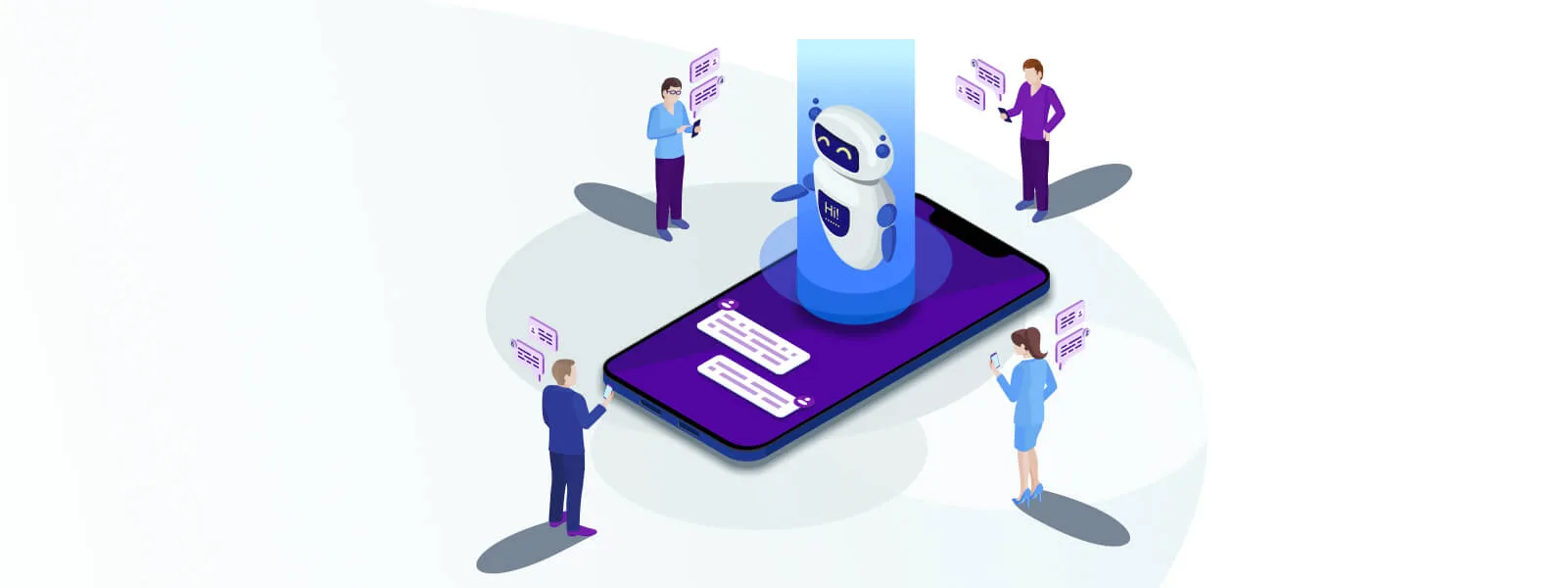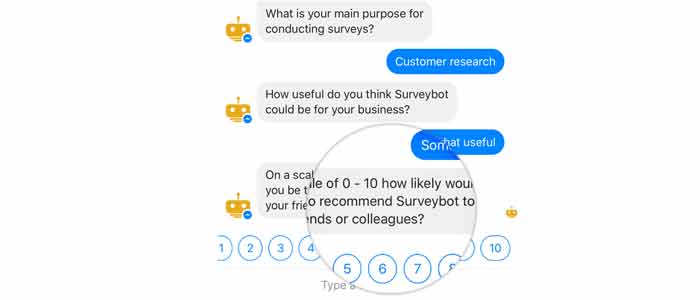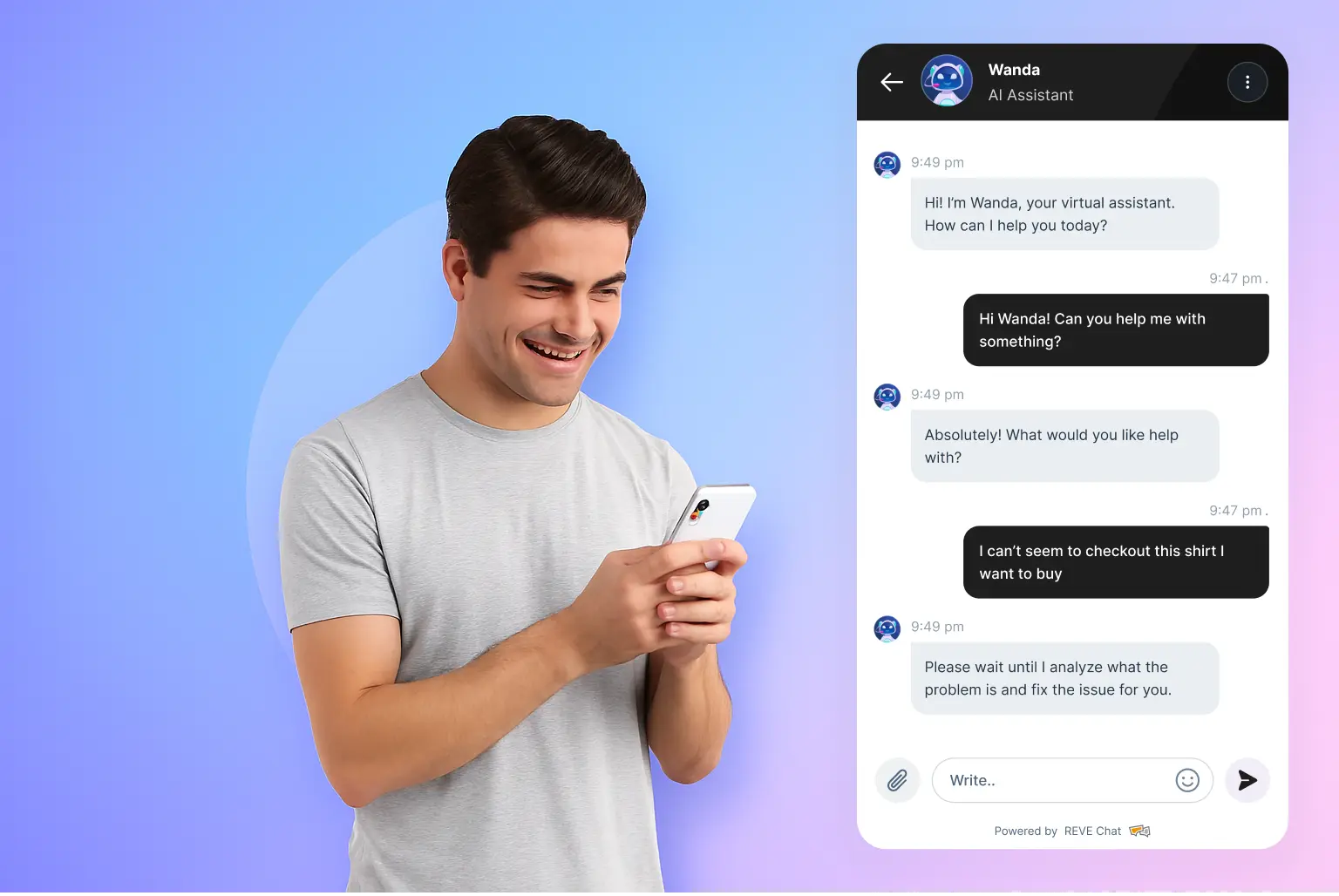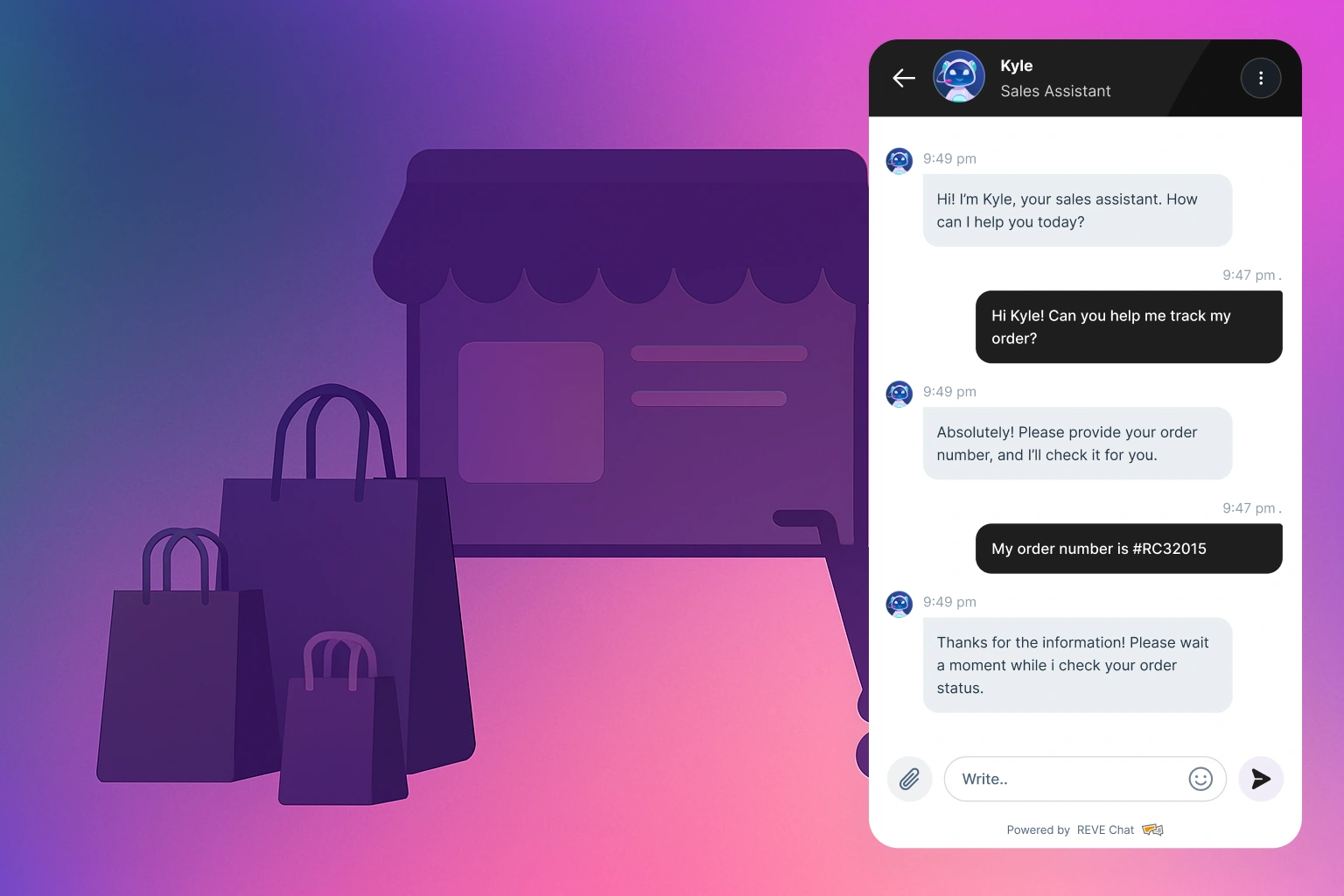Chatbot Analytics: Essential Metrics & KPIs to Measure Bot Success
- March 18, 2020
- 12 mins read
- Listen

Why chatbot analytics matter?
“Information is the oil of the 21st century, and analytics is the combustion engine”. (Gartner Research)While chatbot analytics determines the success of your chatbot, they can also provide valuable insight into opportunities for business growth and retention strategies. It is imperative to be aware of the chatbot’s benefits and capabilities by constantly measuring its performance. This can only be done by knowing the key chatbot metrics, which is an important aspect and a decisive factor for your business success.The key areas where chatbot analytics and metrics help are:Assess chatbot effectiveness
With the right chatbot analytics and KPIs in place, it helps you to understand and measure how chatbots contribute to achieving your business objectives. You can gauge,- How do your customers perceive chatbots? Are they satisfied with the responses?
- Is it helping users to direct towards taking certain actions?
Understand customer satisfaction
Does your virtual assistant agent aka chatbot have a positive impact on recurring conversations? By using the most conversational AI customer analytics, you can understand how far your customers are satisfied after interacting with the bot. Are the responses serving their purpose and they return back to your brand?Measure business ROI
57% of businesses agree that chatbots deliver large returns on investment (RoI) for minimal effort. Chatbot analytics helps to measure the KPIs such as total leads generated, total issues resolved, or cost per issue so that you can compare its performance with other channels. By using chatbot analytics, you can identify the queries your business receives over live chat. Then, filter the simple questions that could be handled by a chatbot. You can calculate the estimated time to handle these queries and similarly annual handling costs.Chatbot analytics: User metrics
Once you understand how a chatbot works, you can measure its performance with the help of chatbot analytics and metrics. By using the KPIs help, you can closely monitor the response time, conversion rate, efficiency enhancement so that you can improve it significantly. The key metrics to evaluate in users side are as follows:Total number of users
The total number of users who interacted with chatbots is one of the primary KPIs you should track. It helps you to capture insights on how many customers are using your chatbot. You also get to know the overall impact and chatbot success. When you further drill down the metric, you can categorize chatbot users into further groups such as active users, engaged users, and new users. The new users especially indicate the overall success of the promotional campaign with your chatbot. As it is obvious, customer preferences change over time, so new users help maintain the customer base strong.Engaged users
Engaged users are active users who have repeated conversations with your bot on a daily or weekly basis. The active users see the value in using your chatbot. They are happy using your bot and keep returning to your business.Number of new users
Imagine you have run a promotional campaign or deployed a chatbot template for online order to bring potential customers to your website. The number of users indicator helps businesses to get real-time insights into the overall popularity of the chatbot which is a great parameter of its success. New users are your potential targets and how your bot is helping them and they are ready to converse again.Chat volume
Evaluating chat volume refers to measuring the number of successful interactions made. It helps to understand more & more customers have started conversation. If the conversation is longer, it indicates a higher chat volume. The visitors are finding it easy to converse with the bot and at the same time, the bot is able to deliver more value to them.The chat volume KPI answers two key questions such as- How frequently is your chatbot being used?
- Is your user base increasing?
Goal completion rate (GCR)
The first & foremost step in building a chatbot is to define the specific end goal. If the chatbot is meeting the exact purpose across the use case it is built then it is really productive. With the GCR metric, you can evaluate the success rate of a defined action performed through your chatbot. There would be different conversion goals for some businesses:- The-commerce businesses can use it for successful checkout.
- For conversational banking, it could be an application fill-up.
- And for SAAS businesses, it could be “Sign up for free trial”.
Number of bot sessions initiated
The chatbot metric measures the interactions sent and received between the users and your chatbot. It monitors and provides information on its ability to engage in a conversation.With rule-based bots, this metric is fairly straightforward. The number of interactions indicates precisely how far down the conversational decision tree the user made. Therefore, assessing whether the connotation of this KPI is positive or negative is not exactly a problem. The ideal length of an NLP bot session tends to vary greatly depending on the chatbot use cases as well as the context of the conversation.Bounce rate
Bounce rate refers to the number of users visitors who enter the website and leave without interacting with your chatbot. In other words, a number of people who navigate away after viewing just one page on your website. If the bounce rate is high, it is obviously a bad sign and an indicator that there’s something wrong with your website design or content. This chatbot KPI needs to be observed closely as it impacts the customer experience.Chatbot analytics: Conversation metrics
With the growing chatbot trends, many businesses have been greatly successful in adopting chatbots, while others have failed in this race. What could be the key reason some chatbots sailed breezily while others sunk?In order to ensure that the chatbot that you have invested in becomes a success or failure, you have to use chatbot conversation metrics to measure and iterate accordingly. Here are the key metrics for chatbot conversational analytics:Human Interaction Vs Chatbot Interaction
Human takeover is one of the critical chatbot evaluation metrics that determine the success of your bot. It refers to two main scenarios:- The conversations that the bot is not able to understand and are transferred to the human agents as a fallback scenario.
- Customers prefer to interact with a human agent over a chatbot to have a comprehensive discussion.
Conversation duration
What’s the ideal length of a chatbot session? Long enough to solve the user’s problem and short enough to prevent them from giving up. The chat duration measures the length of the bot and user interaction. Among the chatbot users, what percentage do exactly what it is designed to make them do?Ideal session length varies by industry. However, monitoring this KPI helps to gauge the effectiveness of the chatbot is the length of the conversation. It shows if the bot is capable of having meaningful conversations and keeping the user engaged or not. Ideally, the chat duration depends on the use cases and the conversation context.Short chats indicate that something is not working and it needs to be fixed. Having the number of steps per conversation is a necessary metric to reach the target audience. If there are too many steps involved, the user might be impatient and leave the conversation in the middle. Also having few conversational steps indicate chatbot flaws that may make the user leave the discussion.Interaction rate
If you want to measure user engagement during conversations with your chatbot, you’ll definitely want to observe the interaction rate KPI. It allows you to measure the average number of messages exchanged during the user-bot conversation.The higher the interaction rate, the higher will be the bot’s effectiveness. And if it is lower, it means using a chatbot is not a wise option. You need to plan out new strategies to engage users.Fallback Rate (FBR)
Like other tools, bots are also not perfect. They fail at times to meet the defined goal. There are certain queries that bots do not understand. The fallback rate captures insights about those scenarios where the bot is not able to understand the user request and provide a relevant solution.For example, the number of times both get confused and replies: “Sorry, I don’t understand”. It impacts your chatbot performance. If a bot cannot handle a conversation and turns to a human too early, it indicates that the bot is failing to meet the goal. The higher the fallback rate, the lower will be the user satisfaction, which means you need to put more effort into training your chatbotFallback rate, one of the key chatbot performance metrics, is favorable for businesses using rule-based bots. As everything is predefined and structured the conversations do not go haywire while NLP-based bots can be pretty complex and hyper-personalized.REVE Chat offers a suite of customer engagement tools that can help you get detailed into user analytics. Sign up to get advanced customer service software and start measuring analytics in a better way.
Chatbot analytics: Customer satisfaction metrics
Customers are increasingly demanding real time communication. Businesses are making customer satisfaction their prime focus. If you are implementing a chatbot to deliver excellent customer support, it is important to measure its impact on overall customer satisfaction.By using CSAT & NPS surveys, businesses can ask the user to rate the conversation with the chatbot. According to Deloitte, “Chatbots can bridge the service and communication gaps between an enterprise and its customers as they are available 24×7 and are data-driven”. Here are some key metrics to measure customer satisfaction:Retention rate
The chatbot KPI helps to record the percentage of users who return to interact with the chatbot within a specific period of time. The more frequently people come back to use your bot, the greater your retention rate. In terms of significance, retention rates vary from largely irrelevant to absolutely essential.As it depends on the purpose of the chatbot. For example, If you are having a chatbot for your beauty salon, it is said to be performing efficiently only if the users return on a daily basis. You can monitor the retention rate by breaking it down into time frames. This will help you to identify vital progress in the customer journey and adjust your customer engagement strategy accordingly.Here are some of the key ways to increase your bot retention rate:- Offer them a discount based on their behavior
- Deliver hyper-personalized conversations
Satisfaction score
The customer satisfaction KPI evaluates the user satisfaction level with bot conversation. At the end of the conversation, your chatbot can ask users a simple yes/no question about their experience. Also, there are various ways to express satisfaction or dissatisfaction with the bot including star ratings or providing emoticons with different expressions.
It is very important to acquire customer feedback as businesses will be able to identify the flaws (poor UI/UX design, repetitive responses, irrelevant answers, etc.) in the bot conversation flow and improve it.
Conclusion
Defining an objective or goal is the most important step in building a successful chatbot. However measuring the right chatbot analytics and metrics, is how to improve your chatbot performance.With REVE Chat, you can build a coding-free chatbot in simple steps. Start a free trial of your engagement tools and stay ahead of the curve with analytics. So before you start building a chatbot, you should
- Identify the end goal during each stage of the bot. While designing the chatbot, the key practice to be followed is to outline the end goal. And when you are evaluating your chatbot experiences, you need to focus on optimizing your chatbot based on your goals in which you can drive your audience to your desired outcome.
- Assign the right chatbot metrics to evaluate its performance. Choosing the right KPI is crucial to measure the overall effectiveness of the chatbot and identify the loopholes. Based on the flaws, you can iterate the bot flow to improve the communication process.




